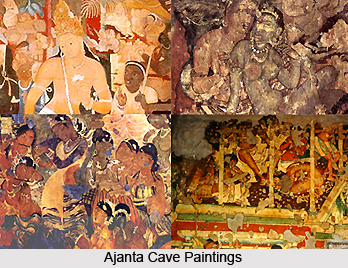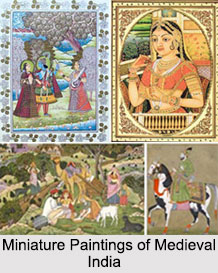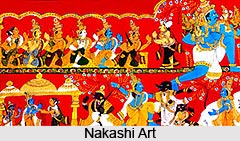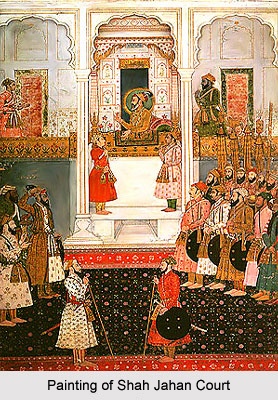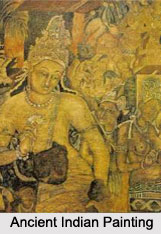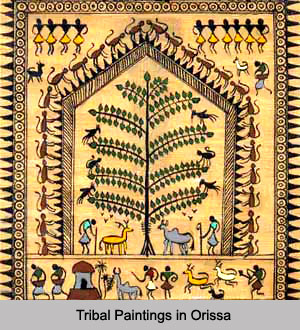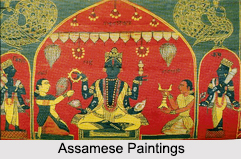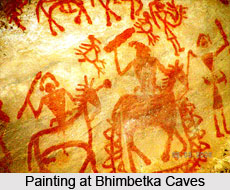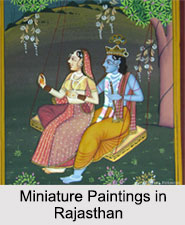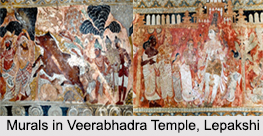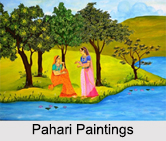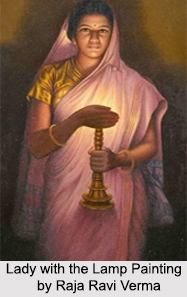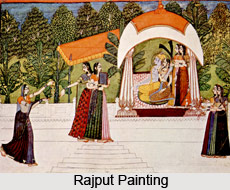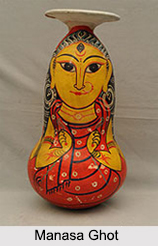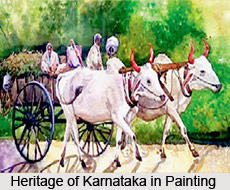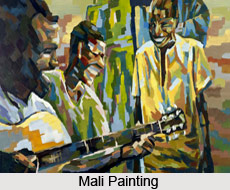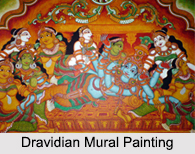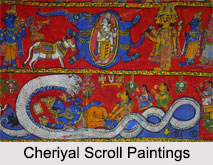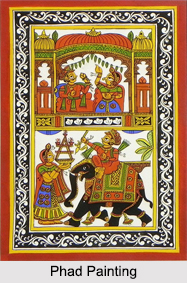 Phad Painting is a type of scroll painting that narrates elaborate religious stories of local deities and Gods. It is a beautiful specimen of Indian cloth painting, which has its origin in Rajasthan. This painting can be simply described as a large painting on Khadi, which venerates the deeds of a hero. The smaller version of "phad" is known as "phadakye". Phad painting has come to be regarded as one of the most sought after folk paintings in the world of art and culture, for their unique beauty and chronicling character. Phad paintings have their individual styles and patterns and are very trendy due to their vibrant colours and historic themes.
Phad Painting is a type of scroll painting that narrates elaborate religious stories of local deities and Gods. It is a beautiful specimen of Indian cloth painting, which has its origin in Rajasthan. This painting can be simply described as a large painting on Khadi, which venerates the deeds of a hero. The smaller version of "phad" is known as "phadakye". Phad painting has come to be regarded as one of the most sought after folk paintings in the world of art and culture, for their unique beauty and chronicling character. Phad paintings have their individual styles and patterns and are very trendy due to their vibrant colours and historic themes.
Themes of Phad Painting
Generally, the life events of the Rajasthani heroes like Goga Chauhan, PrithavirajChauhan, Amar Singh Rathor, Tejaji and many others were illustrated on the Phads in the earlier times. However, nowadays, the stories from the life of Pabuji and Devnarayanji are primarily depicted. Traditional examples of this art are "Devnarayan Ki Phad" and "Pabuji Ki Phad". Paintings transcend time to recreate the story of the brave Rajput warrior Pabuji. Adorning a 30 feet long scroll, these paintings show Pabuji"s victory and the life style of his time.
Preparations of Phad Painting
The commencement of these paintings is an occasion of great celebration for the painter community; hence, before the commencement offerings are made to Goddess Saraswati. Then a rough draft of the sketch is then made on the Khadi cloth and the figures are perfected. A distinct narrative is devised and empty spaces are covered with flora and fauna. All figures are coloured yellow initially and this base is called "kachcha". Then the youngest virgin girl of the artist"s family or a family of a higher caste is called upon to make the first stroke. This ritual is followed by celebrations and distribution of sweets.
Use of Colours for Phad Painting
The colours employed in Phad Painting are generally vegetable dyes and are used in a fixed order starting from orange-yellow to brown, green and red and finally black. Traditionally, only vegetable colours were supposed to be used as these colours remain fast and fresh for a long duration. However the scarcity of these colours was seen as an overwhelming threat to this art form, so the artists were compelled to make innovations. Innovation evolved in the form of waterproof earthen colours. Pounding the natural earthen colours with gum, water and indigo produce the desired colours. The specificity in the use of colours in Phad Painting is remarkable. Only one colour can be used at a time and specific colours are used for different things - orange for limbs and torso, yellow for ornaments, clothing and designs, gray for structure, blue for water and curtains, green for trees and vegetation and red, prominently for dress. All these are outlined with bold black strokes, which give definition to these forms.
Artists of Phad Painting
The art of Phad painting was exclusively practiced by the Joshi community of Rajasthan. Presently, Shree Lal Joshi, Nand Kishor Joshi, Pradip Mukherjee, Prakash Joshi, Ghanshyam Joshi and Shanti Lal Joshi are the most noted artists of the Phad Painting, who are known for their innovations and creativity.
The unique beauty of these paintings has fascinated art connoisseurs around the world. No wonder that today, Phad Painting has come to be regarded as one of the most sought after folk paintings in the world of art and culture.
